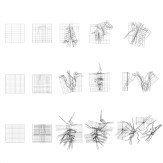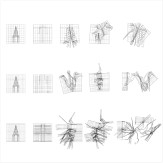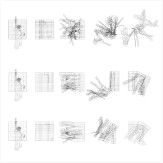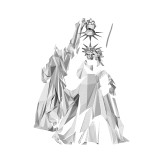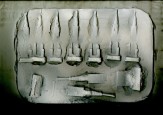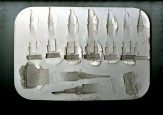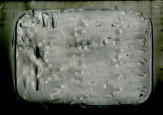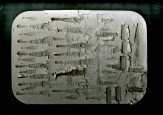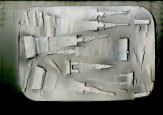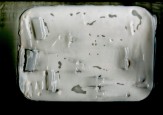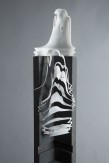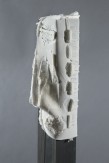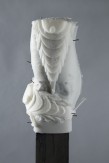Master of Architecture II Thesis 2018

GRADUATE THESIS
Assistant Professor Mersiha Veledar
Towards a New [Hypo]thesis
HYPOTHESIS: 1350–1400: Middle English, Latin
I. A stated proposition assumed as a premise in an argument
II. A proposition laid down or stated as a theme to be discussed or proved
III. A proposition to be proved or one advanced without proof
IV. A dissertation embodying results of original research and especially substantiating a
specific view
V. A statement or theory that is put forward as a premise to be developed through a
proposal/design
Graduate thesis provides a unique opportunity to test new architectural paradigms that are unique to an individual’s own interests in architecture, as rooted within a larger question in architecture today. Within the formulation of a key argument, each student was asked to invent [verbal and visual] evidence with hopes of radically augmenting novel architectural realities through the lens of a ‘hypothesis’ as an investigative design proposition. The unique culmination of this year’s projects aims to test the conceptual underpinnings of key subject areas through a sequence of deeply varied themes that challenge the future of architectural discourse and the world we inhabit in the form of a critical question. The process of discovery and translation from research to the visualization of a proposed argument [and back and forth] became an essential conceptual framework, stimulating each project’s contextual groundwork. The projects were activated by an ‘animate’ method of thinking where the translational process of ‘research as design’ was challenged to capture time and reveal the essence of each thesis argument as an iterative time-lapse within a novel spatial trajectory. This animate reveal inspired novel methods of representation as a sequence of infused matrices, tying together variant conceptual, structural, material, and aesthetic goals of each hypothesis.
Verbal Sytax: The Power of Vocabulary
“I once asked Arragon, the historian, how history was written. He said, ‘You have to invent it.’” – John Cage, An Autobiographical Statement, 1989
How does one summarize a critical argument in a concise and yet developed narrative statement? In collaboration with the literary department at The Cooper Union, each student was asked to develop key written narrative evidence in the form of a “what if” question in architecture. This verbal syntax had its own formal framework, where the linguistic structure and positioning of a hypothesis was clarified though a sequence of verbal propositions, precedents, and new conceptual projections. The presentation of a clear verbal trajectory guided the generative framework of each student’s hypothetical paradox.
Visual Syntax: Drawing and Building 'The Animate' Reveal
Building upon the visual conventions each student learned previously in their careers as architects, this semester challenged this visual syntax while being prompted by an ‘animate’ operational reveal where thematic research was used to invent a novel visual framework of a thesis argument in its tectonic, formal, organizational, and atmospheric language, while generating project evidence.
Precise constraints written into each thesis argument created an environment of innovation and play, where the hierarchy of each animate reveal guided and structured coordinated concepts amongst a multiplicity of animate inspired drawings, animations, and physical models.
This visual framework was challenged though a clear [subject guided] context that allowed each student to learn, discover, build, and invent through an iterative process of making and developing their hypothesis. There are no foregone conclusions, as the most innovative possibilities were found only through precise and intense experimentations, after preconceptions had been discarded and new logics discovered. These notational challenges existed to guide the process of translation and transformation of ‘research as design’ of a hypothetical argument while the visual syntax paradoxically challenged the aforementioned narrative and expressed the language of a thesis argument in its totality.
Semester Structure
This graduate thesis course unfolded as a series of interrelated lectures, discussions, multi-disciplinary critiques, writing exercises, workshops, narratives, and visual presentations.
Thesis topics include: Virtual Tectonics: Re-Reading the Ordinary; Hybrid Systems: Technology, Rituals and Domesticity; OilScapes: Re-Mapping the Politics of Power; The Architecture of [Objects] of Architecture: Material Indexes, Cultural Icons and the Mechanisms of Signification; Fluid Infrastructure: Envisioning Mechanisms of De-Centralized Transportation; Mapping Resiliency: Flooded New York; Body Form: Wrapping Lines to Surface to Poché; City Theater: Towards a New Urbanism; and Making Sense(s): Building a Novel Material Pedagogy.
Key lecturers included: Nader Tehrani, The Cooper Union, NADAAA; Diana Agrest, The Cooper Union, Agrest and Gandelsonas; Skylar Tibbits, MIT Media Lab, SJET LLC; Mitchell Joaquim, TerreformONE, NYU; Evangelos Kotsioris, MoMA; Ben Gilmartin, Partner Diller Scofidio+Renfro; Yasmin Vobis, The Cooper Union, Ultramoderne; Anna Bokov, The Cooper Union; Michael Young, The Cooper Union, Young & Ayata.
Studio Critics: Nader Tehrani, Anna Bokov, Lauren Kogod, James Lowder, Michael Young
Literary Critic: Philip Polefrone
< Back to Selected Graduate Design Studio Projects
VIEW INDIVIDUAL PROJECTS BELOW
Projects
-
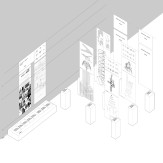
Objects of [Architecture] of Objects: Material Indexes, Vertical Icons, and Mechanisms of Signification
Back
Objects of [Architecture] of Objects: Material Indexes, Vertical Icons, and Mechanisms of Signification
Joseph Raffin
This [hypo]thesis reverse-engineers the tectonic mechanisms of objectified skin and structure that define vertical icons of New York City in order to proffer a more evolving, [de]objectified, and [de]familiarized mechanism of vertical iconicity.
Conventionally, a structural system is erected and then surrounded by a material skin that dually indexes an image and lofts it up into a framed view, surrounded by an urban matrix of boulevards, streets, and avenues. This vertical iconography is consumed, commercialized, and objectified, immediately or over some time, by a corresponding city culture. New York City has become a field of verticality, with ever more (generic) icons being consistently generated. The core of this thesis aims to rupture this conventional relationship by isolating these vertical mechanisms of iconicity through the agency of analytical representation, while removing and unfolding skin from structure and dissecting, scaling, and re-constructing novel figures within a new structural system where vertical iconicity is re-imagined that both distances the vertical icon from its previous associations and opens up a multiplicity of experimental readings.
This new iconicity moves existing vertical icons towards a de-objectified and malleable system that aims to create a multiplicity of ever evolving [animate] figures. This investigation opens up these relationships through methods of dissection, in order to show how the manipulation of the city’s icons can lead to their familiarization/ defamiliarization, or objectification/ de-objectification.
In order to crack open the nature of the disseminative properties of a building, one needs a readily available cultural icon on which to operate or work from. The Chrysler Building and The Statue of Liberty leap forward in the ubiquitous of their mass-produced and apparent recognizability as iconic presences on the New York skyline.




